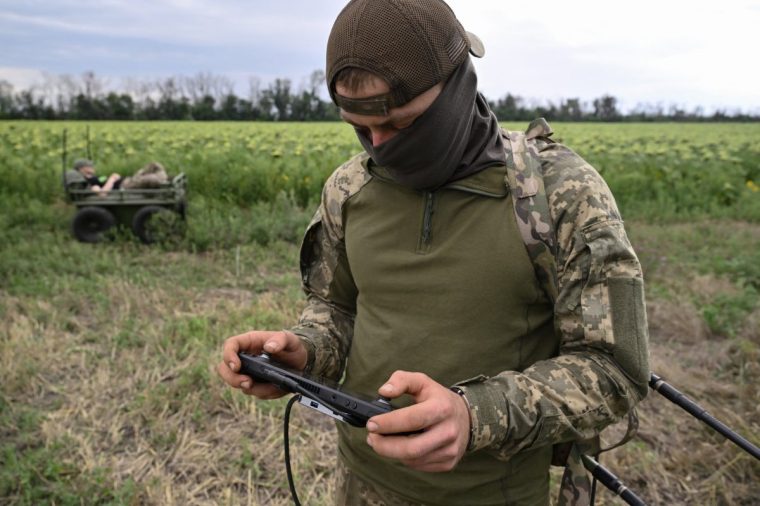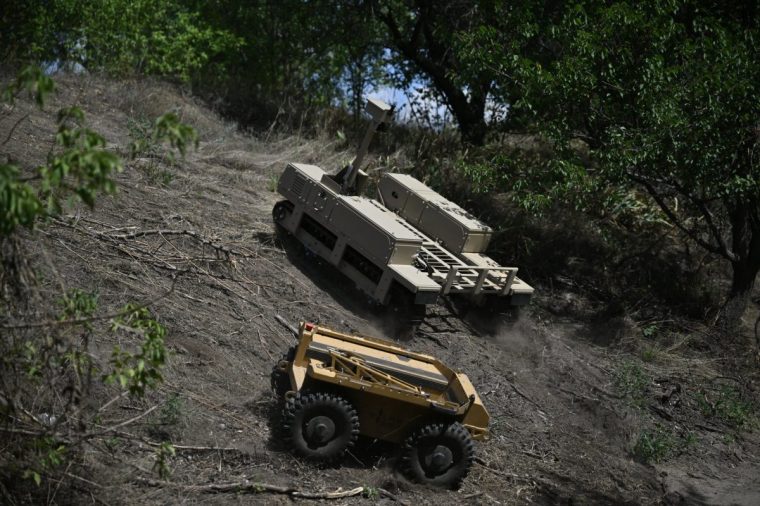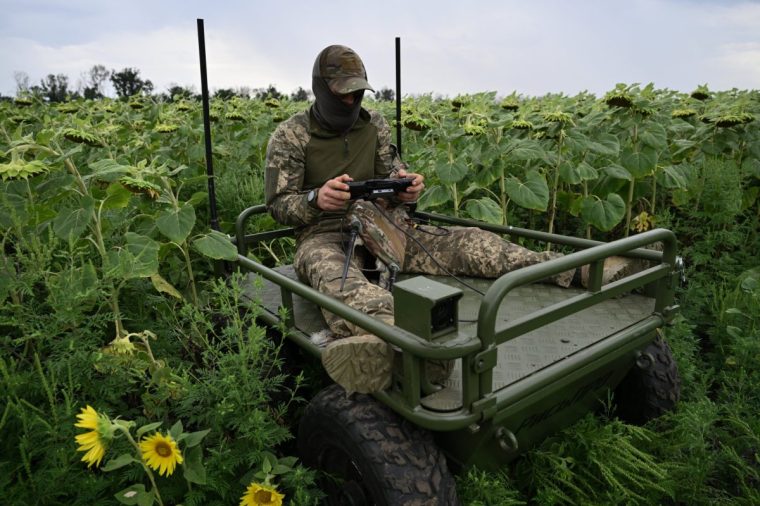Go-kart-sized ground drones can help clear minefields, carry out blood transfusions and launch attacks
Ukrainian soldiers are increasingly relying on unmanned drones akin to small tanks in their fight against Russia, military insiders have said, as Kyiv expands its arsenal against Vladimir Putin’s invasion.
Airborne drones have revolutionised warfare in Ukraine and are now used daily to gather intelligence and to launch attacks, with drones now accounting for an estimated 70 per cent of casualties.
But Ukrainian insiders and military analysts told The i Paper they were increasingly using ground drones, which are often the size of a go-kart, for both logistics and attacks.
Dzyga’s Paw, which supplies equipment to Ukraine’s military units, said the number of requests for ground drones from frontline soldiers was “actively increasing”.
One Ukrainian drone pilot said his unit was mostly using ground drones for logistics – including ammunition, food and water deliveries and evacuation of the wounded – enabling the force to keep troops out of harm’s way.

“We are trying to save the life of a soldier by replacing him with a drone, ground or air,” the drone operator said.
In his unit, they have already proved life-saving on the battlefield.
“Our sniper performed a blood transfusion on a position to a wounded soldier,” he said. “The blood was delivered by drone, and he performed a blood transfusion on the front line.”
The ground drones can also be used as weapons, to launch missiles from, but are more expensive than airborne drones so are “less popular”, the pilot said.
Another Ukrainian drone pilot said that ground drones had begun to improve in recent months and were now able to handle more of the logistics in his unit.
“We use them as weapons, but not as much as UAVs [unmanned aerial vehicles]. They are more complicated to use; the terrain is different everywhere, but the air is similar,” the pilot said.
International drones ‘lagging behind’ Ukrainian firms
The unmanned ground vehicles (UGVs) used on Ukraine’s front lines are made by homegrown defence companies, which sprung up rapidly following the invasion as civilian tech experts pivoted towards the war effort.
They cost upwards of $500 (£373) and usually between $3,000 (£2,241) and $5,000 (£3,735), he said.
The drone pilot, who works between the front lines of the east and training in the west of Ukraine, said that international companies were “lagging behind” with most products “absolutely useless”.
“Ninety per cent of drones we make in Ukraine,” the soldier said. “10 per cent we buy ready-made, mostly from DJI [a Chinese technology firm].”
UGVs are also being used by Russians, who are “developing very strongly” in the field – “but mostly they take our developments and improve them”, the pilot claimed.

Sam Cranny-Evans, associate fellow at defence think-tank the Royal United Services Institute (Rusi), said that the capabilities of ground drones were evolving, but were most commonly used to support infantry by carrying equipment, clearing routes of mines and obstacles, and casualty evacuation.
Some can be armed with machine guns or automatic grenade-launchers, while others are used in a kamikaze role – fitted with large amounts of explosives and driven into a trench or building to destroy it, Cranny-Evans said.
“An aerial drone can find a minefield, but it can’t clear it like a UGV, for example. So, they should be seen as complementary,” he said.
“It is almost unethical to send soldiers into some scenarios now. FPVs [first person-view drones], artillery, and the accuracy of small arms can make missions like reconnaissance very high-risk for the soldiers involved.
“Ukraine is perhaps an anomaly, but we have seen how, time and again, even well-trained units will be completely destroyed before they even reach their objective. This, I think, is where UGVs need to come in.”

Karl Eze, CEO of Point Zenith, a drone company which works with the British Ministry of Defence, said that uncrewed vehicles are “useful at dangerous, dull, and difficult tasks”.
“Many are the size of a go-kart, with caterpillar tracks, looking very similar in base to bomb disposal robots, [while] others can be retrofitted conventional military vehicles,” Eze said.
“The ability to take the soldiers out of harm’s way for the last mile resupply, using cheap vehicles built from largely commercially available components has great utility when fighting an enemy with superior numbers.
“When used as one-way attack weapons, UGVs’ increased payload capacity against comparable UAS [unmanned aircraft system] means that they’re able to deliver a large amount of high explosives to a target.
“When used as weapon platforms carrying anti-tank guided weapons or small arms such as remote station machine guns – again their utility is keeping the operator out of the range of direct weapons fire of the enemy.”
But the drones are not a silver bullet in the fight against Russia.
“The challenge is often around how they are controlled and autonomous navigation,” Cranny-Evans said.
“This is because some cameras struggle to see and understand things like holes in the ground.
“Technology is evolving in this area and there are commercial companies bringing their expertise from the commercial world to defence. Otherwise, they have to be remotely controlled like an aerial drone, and that requires a line of sight to the UGV – if it gets broken then they might lose control.”
Eze said that ground drones were easier to find and strike than their airborne counterparts, meaning they were increasingly targeted by air drones.
